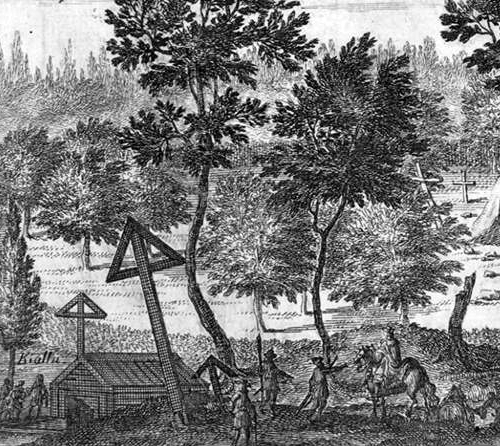Ingamoder on:
[Wikipedia]
[Google]
[Amazon]
''Ingamoder'' is a
 ''Ingemo'' was a local Swedish saint in
''Ingemo'' was a local Swedish saint in
Swedish
Swedish or ' may refer to:
Anything from or related to Sweden, a country in Northern Europe. Or, specifically:
* Swedish language, a North Germanic language spoken primarily in Sweden and Finland
** Swedish alphabet, the official alphabet used by ...
name invented in modern times for the daughter of King Emund the Old
Emund the Old or Edmund (Swedish: ''Emund den gamle'', Old Swedish: ''Æmunðær gamlæ'', ''Æmunðær gammal'', ''Æmunðær slemæ'') was King of Sweden from c. 1050 to c. 1060. His short reign was characterised by disputes with the Archbishop ...
who was married to King Stenkil of Sweden
Stenkil (Old Norse: ''Steinkell'') was a King of Sweden who ruled c. 1060 until 1066. He succeeded Emund the Old and became the first king from the House of Stenkil. He is praised as a devout Christian, but with an accommodating stance towards th ...
and whose given name is not known. It translates to English as "Mother of Inge" (that is of King Inge the Elder
Inge the Elder (Swedish: ''Inge Stenkilsson''; Old Norse: ''Ingi Steinkelsson''; died c. 1105–1110) was a king of Sweden. In English literature he has also been called ''Ingold''. While scant sources do not allow us to paint a full picture of hi ...
).
Biography
The woman was born about 1025 to King Emund. She married Stenkil, who would later inherit her father's title. According to a few more or less reliable sources King Stenkil had four sons, of which the first two can be considered known to history: *Inge the Elder
Inge the Elder (Swedish: ''Inge Stenkilsson''; Old Norse: ''Ingi Steinkelsson''; died c. 1105–1110) was a king of Sweden. In English literature he has also been called ''Ingold''. While scant sources do not allow us to paint a full picture of hi ...
, King of Sweden
* Halsten Stenkilsson
Halsten Stenkilsson, English exonym: Alstan (Old Icelandic: ''Hallstein''Eric
The given name Eric, Erich, Erikk, Erik, Erick, or Eirik is derived from the Old Norse name ''Eiríkr'' (or ''Eríkr'' in Old East Norse due to monophthongization).
The first element, ''ei-'' may be derived from the older Proto-Norse ''* ain ...
Purported identity as ''Ingemo''
 ''Ingemo'' was a local Swedish saint in
''Ingemo'' was a local Swedish saint in Västergötland
Västergötland (), also known as West Gothland or the Latinized version Westrogothia in older literature, is one of the 25 traditional non-administrative provinces of Sweden (''landskap'' in Swedish), situated in the southwest of Sweden.
Väs ...
, however, she was not officially sanctioned and recognized by the Church. She is known only from customs at the Ingemo Well
Saint Ingemo Fountain was a sacrificial source and fountain of devotion in the Swedish province of Västergötland, located between Skövde and Tidaholm.
The cult of Saint Ingemo is certified only since the time of the Protestant Reformation. ...
in Sweden. Ingemo Well ( sv, Ingemo källa), located between Skövde
Skövde () is a locality and urban centre in Skövde Municipality and Västra Götaland County, in the Västergötland (Western Gothland region) in central Southern Sweden.
Skövde is situated some 150 km northeast of Gothenburg, between Swe ...
and Tidaholm
Tidaholm () is a locality and the seat of Tidaholm Municipality in Västergötland Province within Västra Götaland County, Sweden. The city consists of 520 square kilometers, or a little more than 200 square miles. It is located on the Tidan Rive ...
, is a natural well where Ingemo was venerated according to legend, and which may originally have been a Pagan era holy site well. The well is walled with stone, its dimensions are 1,2 × 0,6 meter. It is covered with a limestone slab. The well was the goal of pilgrimage
A pilgrimage is a journey, often into an unknown or foreign place, where a person goes in search of new or expanded meaning about their self, others, nature, or a higher good, through the experience. It can lead to a personal transformation, aft ...
s, where people offered coin
A coin is a small, flat (usually depending on the country or value), round piece of metal or plastic used primarily as a medium of exchange or legal tender. They are standardized in weight, and produced in large quantities at a mint in order t ...
s for health into the 19th century. The earliest accounts of the customs at the well date from the late 17th century.
Modern genealogical speculation made her the mother of Inge but ''Ingemo'' cannot be reliably sourced as the same person as ''Ingamoder''.
References
Other sources
*Ohlmarks, Åke ''Alla Sveriges drottningar'' (AWE/Geber: 1976) Swedish *Ohlmarks, Åke ''Alla Sveriges prinsessor'' (AWE/Geber: 1979) Swedish {{DEFAULTSORT:Ingemo 11th-century Swedish women Medieval Swedish saints People from Västergötland Swedish queens Swedish princesses House of Munsö Female saints of medieval Sweden Daughters of kings